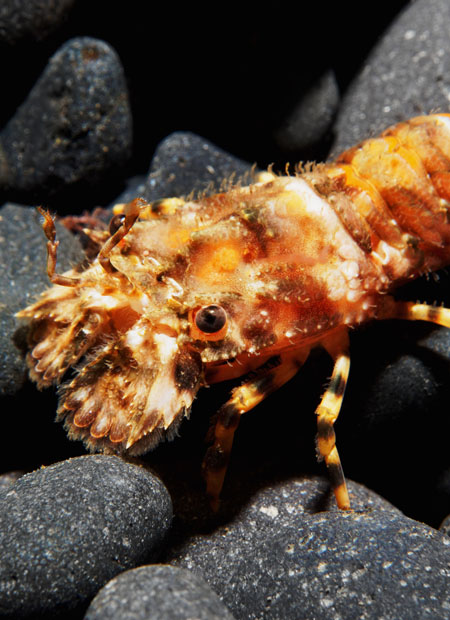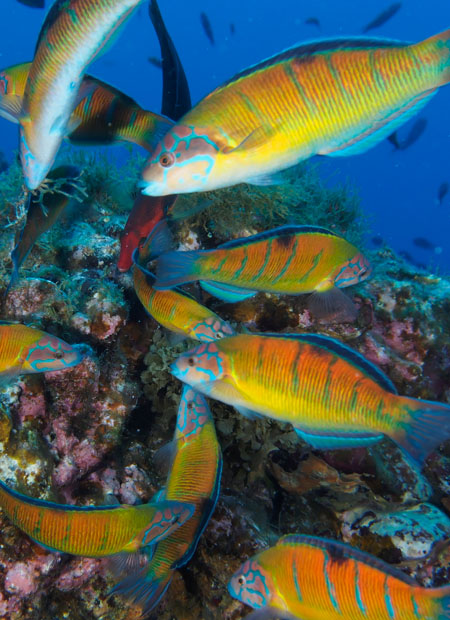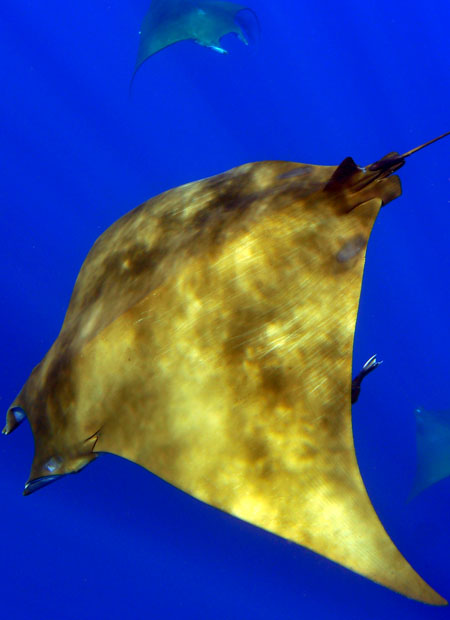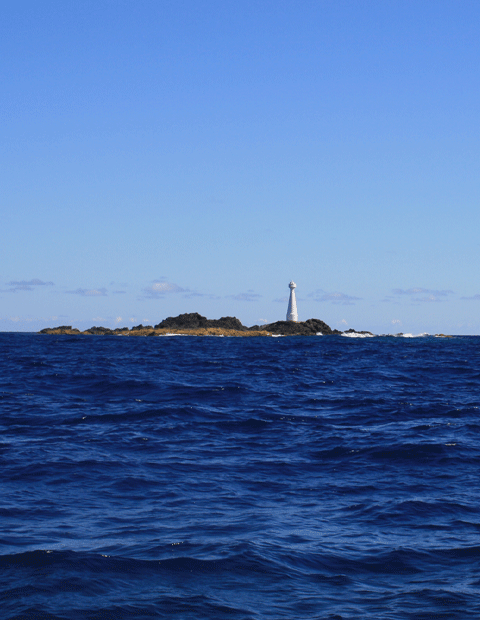
Diving sites
Generally our dive sites are reached by boat (8,40m RIB + 6,90 RIB). Shore dives are also possible, they are more suitable for inexperienced divers. They also are alternative dive sites in case of bad weather when it’s not possible to take the boat out.
We are the only dive center on Santa Maria, that offers more than 60 dive sites –among those some „hidden secrets“ like smaller caves and caverns.
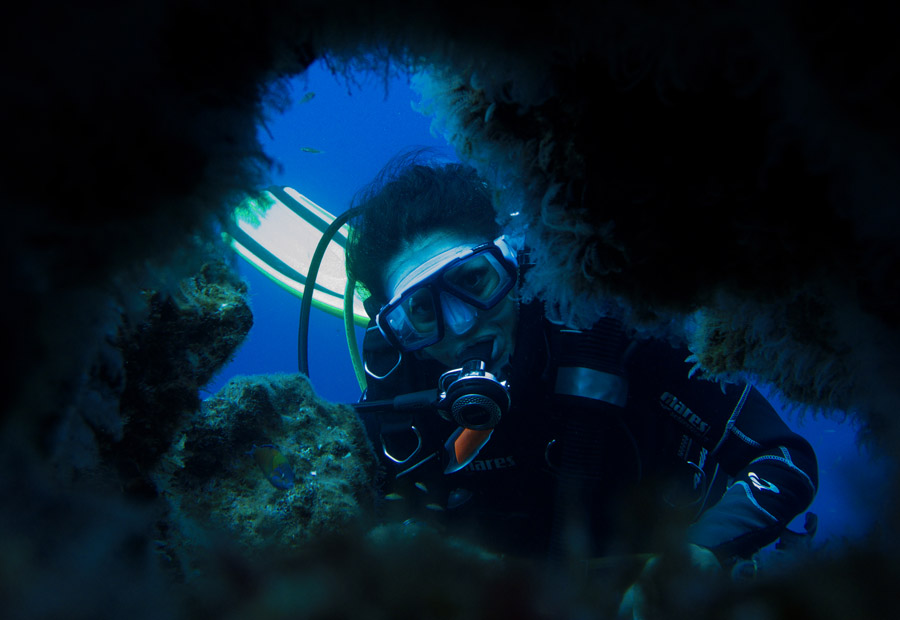
Dive sites
Generally our dive sites are reached by boat (8,40m RIB + 6,90 RIB). Shore dives are also possible, they are more suitable for inexperienced divers. They also are alternative dive sites in case of bad weather when it’s not possible to take the boat out.
We are the only dive center on Santa Maria, that offers more than 60 dive sites –among those some „hidden secrets“ like smaller caves and caverns.
Basics
- water temperatures up to 25°C in summer, min. 17°C in winter
- visibility average 20 – 40m, at times up to 60m!
- more than 60 dive sites in different levels of difficulty, among these 10 with marine-reserve status
- due to the gulf stream, unbelievable abundance and variety of fishes
- boat dives from May until October
Marine life
- beautiful drop-offs
- several offshore-shoals
- 14 caverns and caves
- bizarre rock and lava formations (overhang, archways, canyons)
Our highlights
Ilhéus das Formigas*
Formigas – 20 nautical miles off the shore of São Lourenço in the open sea, one of the most popular dive site areas in the Atlantic Ocean – for big-stuff sightings!
Banco Dollabarat*
Dollabarat – 3 nautical miles from Formigas. A seamount that looms from several 100m up to 4m – another site for mainly big-stuff!
Baixa do Ambrosio*
Another seamount with its peak at 42m – our mobula-spot
(*These off-shore dive sites are with surcharge!)
Pedrinha
Pedrinha another marine reserve and highlight, only 10 minutes by boat from Vila do Porto marina. Several huge boulders that show the whole marine life of the Atlantc Ocean. Small nudibranches, different kinds of crabs, but also barracudas, groupers, different kinds of moray eels and mackerels. From time to time mobula rays, manta rays and wahoos can show up. Even the big oceanic sunfish (Mola mola) can be seen here. Definately a must-do divesite during your vacation on Santa Maria.
Baixa da Maia
Baixa da Maia also a marine reserve on the east coast of Santa Maria in front of Maia village. A divesite that offers great possibilities for underwater photographers. Big schools of barracudas and amberjacks circle around some smaller and bigger boulders, looking for preys like monkfishes or small sardines.
One highlight is the northern part of the main rock: it’s completely covered with yellow anemonies (Terrazoanthus sp.).
Groupers, huge crabs as the locus lobster (Scyllarides latus), different kinds of moray eels and often stingrays can be watched here.
Secret Cave
Its entrance is hidden behind a huge boulder and can only be accessed when the sea is calm. Inside the cave you can see big yellowfin jacks and most probably stingrays. Though some parts are only 5m deep, it is not for unexperienced divers.
Maia Cave
One of the most beautiful underwater caves within the Azores.
Several entrances/exits, small stalactites, stingrays, shrimps, different kind of lobsters (Scyllardes latus and Scyllarus arctus) and crabs,
and for macro lovers: the bumblee shrimp (Gnathophyllum elegans) can be found.
Flora and fauna
At shore
Dusky groupers, amberjacks, barracudas, schools of sardines, moray eels, octopuses, sting rays, nudibranches, fire-worms, black corals, sea anemones, sponges
In the caves
Unicorn shrimps, locus lobsters, octopuses, different nudibranches, sponges, yellowjacks, moray eels, sting rays
Blue water
Full grown jacks, sharks, tunas, dolphins, turtles, Cory’s shearwater, eagle rays, pelagic sting rays (mainly mobula-rays, occasionally manta rays)
Basics
- water temperatures up to 25°C in summer, min. 17°C in winter
- visibility average 20 – 40m, at times up to 60m!
- more than 60 dive sites in different levels of difficulty, among these 10 with marine-reserve status
- due to the gulf stream, unbelievable abundance and variety of fishes
- boat dives from May until October
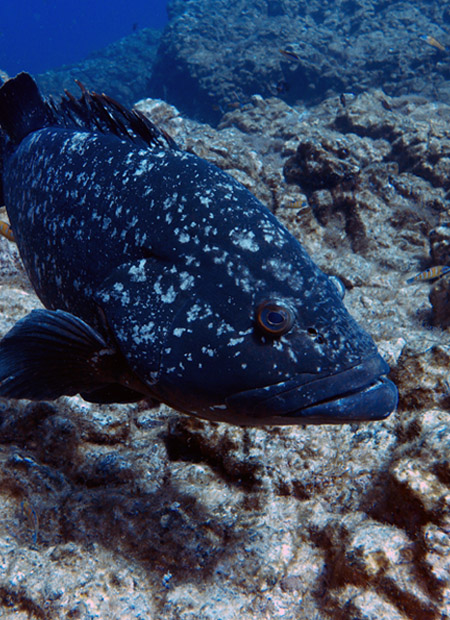
Marine life
- beautiful drop-offs
- several offshore-shoals
- 14 caverns and caves
- bizarre rock and lava formations (overhang, archways, canyons)
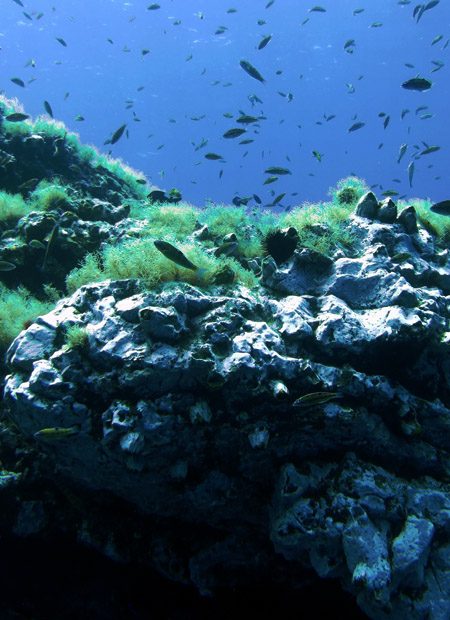
Our Highlights
Ilhéus das Formigas*
Formigas – 20 nautical miles off the shore of São Lourenço in the open sea, one of the most popular dive site areas in the Atlantic Ocean – for big-stuff sightings!
Banco Dollabarat*
Dollabarat – 3 nautical miles from Formigas. A seamount that looms from several 100m up to 4m – another site for mainly big-stuff!
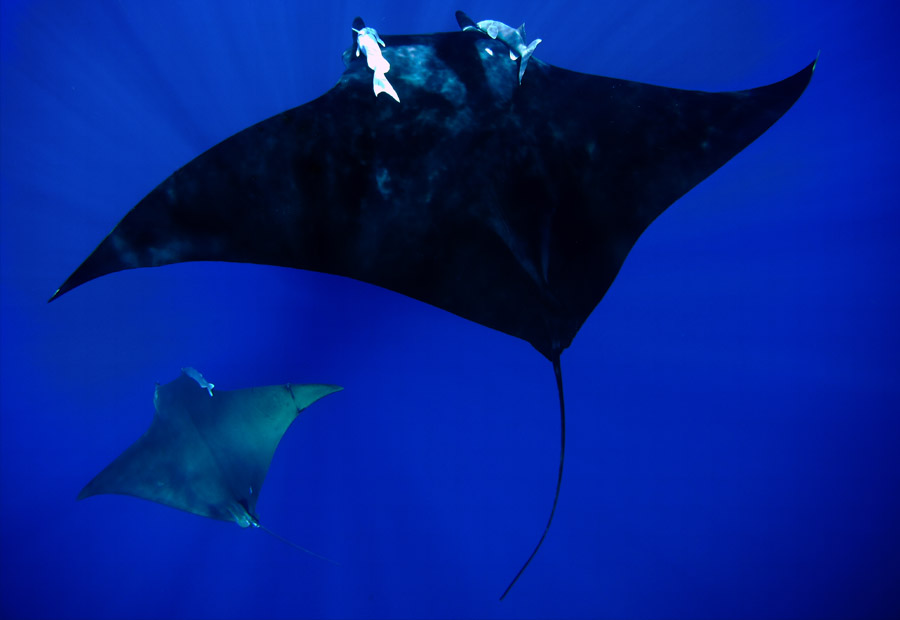
Baixa do Ambrosio*
another seamount with its peak at 42m – our mobula-spot
(*These off-shore dive sites are with surcharge!)
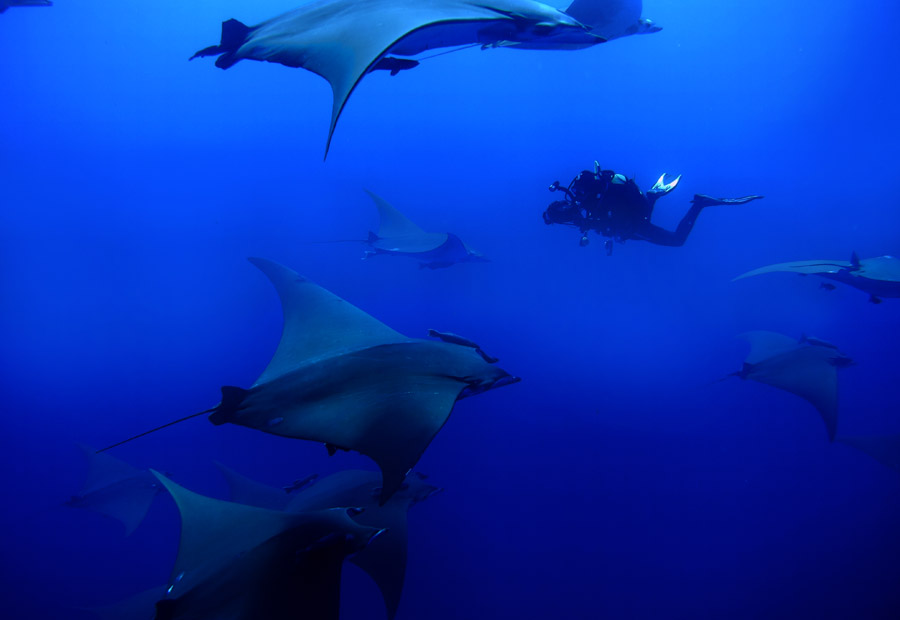
Pedrinha
Pedrinha another marine reserve and highlight, only 10 minutes by boat from Vila do Porto marina. Several huge boulders that show the whole marine life of the Atlantc Ocean. Small nudibranches, different kinds of crabs, but also barracudas, groupers, different kinds of moray eels and mackerels. From time to time mobula rays, manta rays and wahoos can show up. Even the big oceanic sunfish (Mola mola) can be seen here. Definately a must-do divesite during your vacation on Santa Maria.
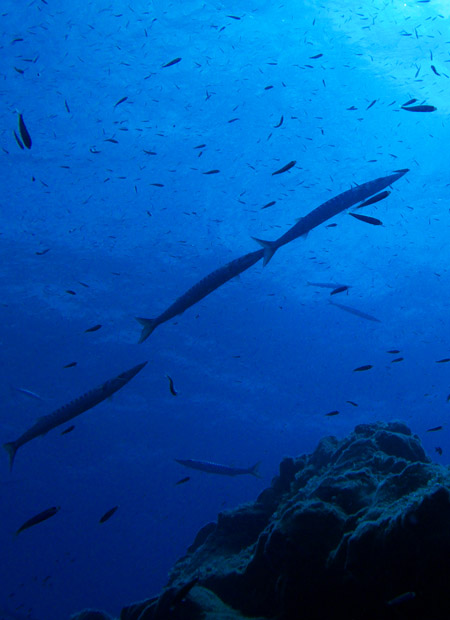
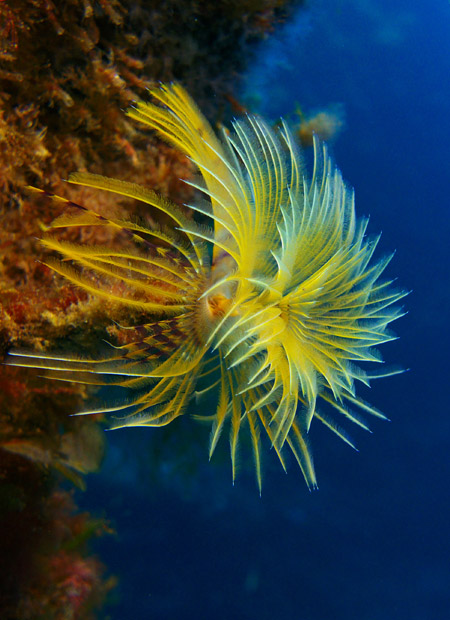
Baixa da Maia
Baixa da Maia also a marine reserve on the east coast of Santa Maria in front of Maia village. A divesite that offers great possibilities for underwater photographers. Big schools of barracudas and amberjacks circle around some smaller and bigger boulders, looking for preys like monkfishes or small sardines.
One highlight is the northern part of the main rock: it’s completely covered with yellow anemonies (Terrazoanthus sp.).
Groupers, huge crabs as the locus lobster (Scyllarides latus), different kinds of moray eels and often stingrays can be watched here.
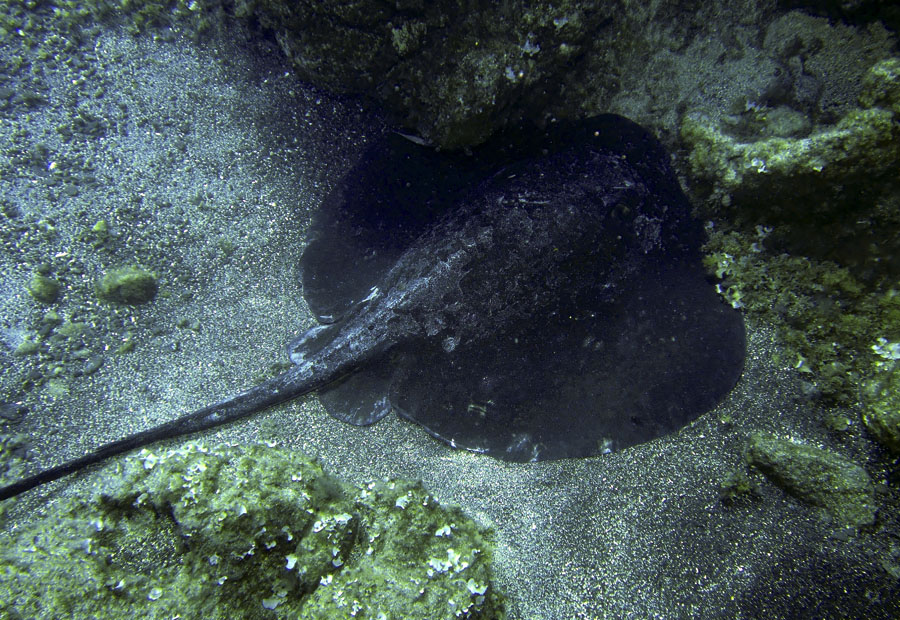
Secret Cave
Its entrance is hidden behind a huge boulder and can only be accessed when the sea is calm. Inside the cave you can see big yellowfin jacks and most probably stingrays. Though some parts are only 5m deep, it is not for unexperienced divers.
Maia Cave
One of the most beautiful underwater caves within the Azores.
Several entrances/exits, small stalactites, stingrays, shrimps, different kind of lobsters (Scyllardes latus and Scyllarus arctus) and crabs. For macro lovers: the bumblee shrimp (Gnathophyllum elegans) can be found.
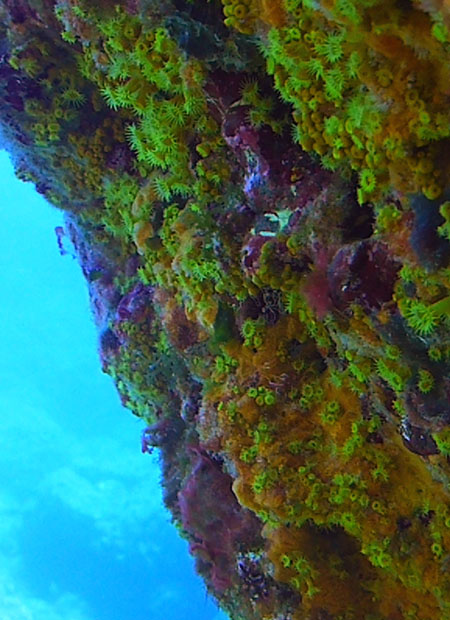
Flora and fauna
At shore
Dusky groupers, amberjacks, barracudas, schools of sardines, moray eels, octopuses, sting rays, nudibranches, fire-worms, black corals, sea anemones, sponges
In the caves
Unicorn shrimps, locus lobsters, octopuses, different nudibranches, sponges, yellowjacks, moray eels, sting rays
Blue water
Full grown jacks, sharks, tunas, dolphins, turtles, Cory’s shearwater, eagle rays, pelagic sting rays (mainly mobula-rays, occasionally manta rays)
